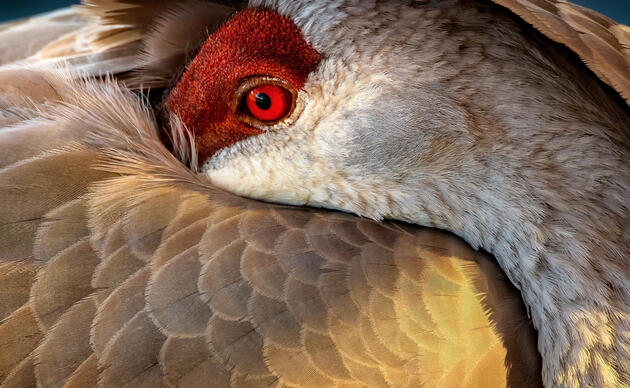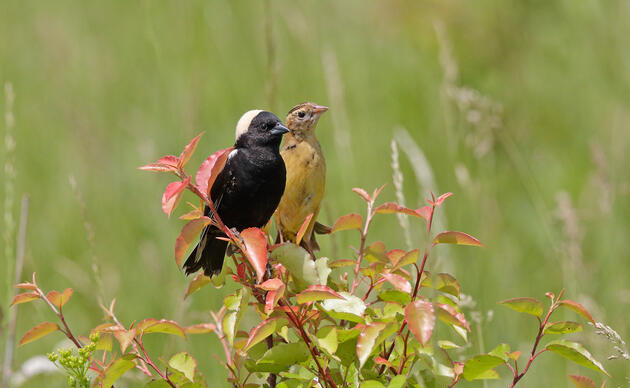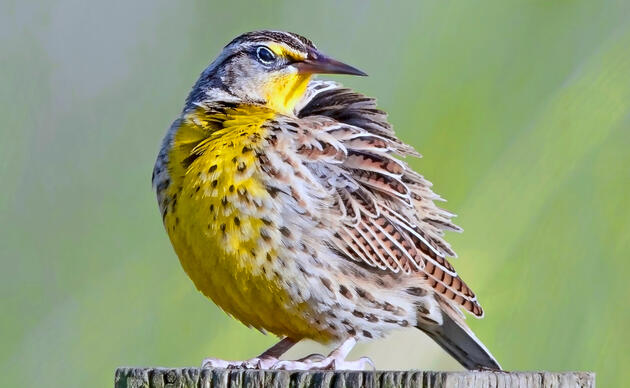Juli Bosmoe and Bill Sellers
Grasslands are disappearing at an alarming rate, and the primary drivers of this loss may surprise you. Land use conversion and tree cover expansion are increasing at the same rate – and that rate is beyond exponential. We have multiple tree species threatening the great plains grasslands: Eastern red cedar, Rocky Mountain juniper, Russian olive, and Siberian elm.
Dakotas
Russian olive and Siberian elm were once thought to be a fantastic choice for shelter belts when they were introduced in the mid -20th century. They were cold hardy, grew fast, and were disease resistant. However, they tend to escape those shelterbelts and spread into pastures, CRP, and other grasslands at an alarming rate. It may not look like something to be alarmed about now in the Dakotas, but we have warning signs and war stories to heed from Oklahoma, Kansas, and Nebraska. Russian olive, introduced from Eurasia, decreases nearby native vegetation species diversity which decreases wildlife species diversity.
The approach to managing Russian olives is multipronged. Using a strategy developed by Dirac Twidwell, a highly regarded rangeland scientist, we start by securing the areas uninvaded by trees and work outward. Then, we manage those sites to avoid bringing in seed or opportunity for trees to establish. Once trees are mature control is difficult; early detection and rapid response are essential.
In addition, awareness and prevention are the most effective tools for managing against invasion. Russian olives, though not recognized as a noxious weed in North Dakota (yet!), should no longer be planted. It is too difficult to control once it inevitably escapes shelterbelts and the long-term costs are high.
In an ideal scenario, land managers would be able to team up with neighbors to remove Russian olives in shelterbelts and remove younger trees that pop up in grassland. That way, a contiguous zone can be developed that is defensible from further encroachment.
Since managing Russian olive and other invasive trees is cost-prohibitive, Audubon has financial assistance available to manage these contributors to the drastic decline in grassland bird populations. For those with land in eastern North Dakota, 90% of the tree removal costs can be covered by our Red River Valley Prairie Management Toolbox Program.
Nebraska Sandhills
Eastern red cedar has been invading grasslands for decades in southern plains states and now, in places like the sandhills of Nebraska, they have drastically impacted the landscape. The sandhills of Nebraska are the last largest contiguous grassland in the world and this invasion of cedars has ranchers desperately trying to protect it.
Cedars are ushering in a biome collapse in Nebraska. A native tree once controlled by periodic fire and propagated by windbreak plantings, now completely dominate some portions of the state. The loss of grasslands has several impacts including the state’s economics, increased wildfire risk, and wildlife habitat degradation. As cedar seedlings encroach, they slowly decrease available acres for grazing. This process is slow enough that stocking rates aren’t significantly impacted on an annual basis, but over the course of ten years forage production can be decreased up to 55%, which does impact cattle producers’ bottom line at that time.
The Natural Resources Conservation Service is leading an initiative to address this widespread threat. Through the Great Plains Grassland Initiative, several conservation partners, including Audubon Great Plains, are focusing efforts toward creating cedar-free core areas. These core areas are both financially and biologically easier to maintain against cedar encroachment compared to areas that still have seed bearing trees present.
Audubon Great Plains is also partnering with the Sandhills Task Force, the Nebraska Game and Parks Commission, and the U.S. Fish and Wildlife Service to provide cost-sharing up to 75% for mechanical removal of cedars. This cost-share program is designed to set the clock back for producers with early stages of cedar encroachment in their pastures. The post removal flush of cedar regrowth and long-term management is the responsibility of the landowner, but removal programs are designed to create a reasonable starting point for cedar management.
Audubon Great Plains and their partners can provide technical assistance for tactics and techniques in managing cedar regrowth, including prescribed burn plans, which is ultimately the only way of eradicating cedar seeds that have laid dormant for years.
Working Lands
Audubon Great Plains Working Lands programs consist of privately-managed lands enrolled in the Audubon Conservation Ranching Initiative, Prairie Management Toolbox Programs, and Conservation Forage Program. Land owners participate in voluntary enhancement and preservation of critical grassland habitats. Audubon also helps land owners apply “bird-friendly” grazing practices and develop market-based solutions to build economic incentives that benefit landowners, consumers, and the environment.
For more on our work using prescribed fire to manage invasives, click here: Another Consequence of Suppressing Wildfire: Trees Are Invading the Prairie








